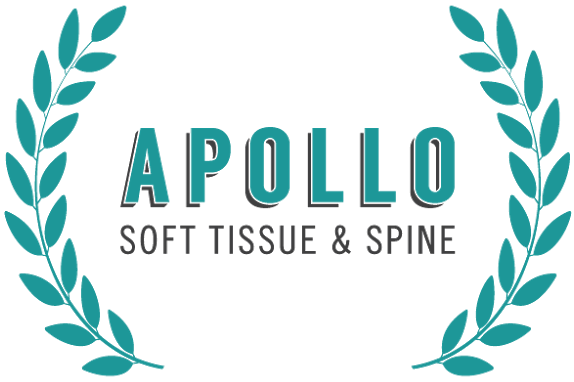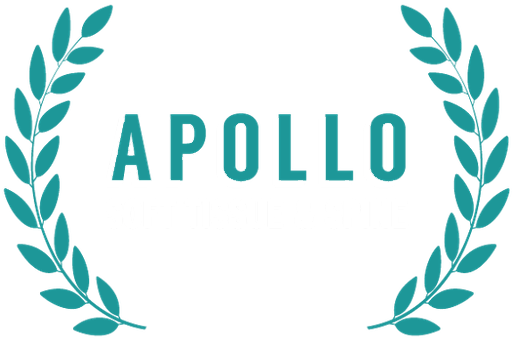Muscle strain, often termed a pulled muscle, arises when muscle fibers undergo excessive stretching or tearing, commonly due to strenuous activities such as sports, exercise, or heavy lifting. Symptoms include pain, swelling, and restricted movement, affecting individuals across diverse demographics. Recognizing the severity of a muscle strain is pivotal for determining the most suitable course of action. For instance, if one sustains a hamstring strain while running, they may experience sharp pain in the thigh, impeding basic movements like walking or bending the knee, prompting individuals to seek appropriate treatment and recovery strategies.
While traditional methods like RICE (rest, ice, compression, and elevation) help muscle recovery, they can be slow. That is when Extracorporeal Magnetotransduction Therapy (EMTT) offers a groundbreaking solution. EMTT accelerates healing, reduces inflammation, and relieves pain by targeting damaged muscle tissue with electromagnetic pulses. Learning how to speed up muscle strain recovery is crucial for swiftly returning to normal activities and reducing the risk of worsening the injury.
Overview of EMTT Therapy
What is EMTT? Extracorporeal Magnetotransduction Therapy (EMTT) is an advanced therapeutic technology that utilizes magnetic fields to treat various musculoskeletal disorders, including muscle strains. Unlike traditional methods that rely on direct physical manipulation or invasive procedures, EMTT offers a non-contact, non-invasive approach. This therapy is especially beneficial for patients seeking a rapid recovery without the downtime associated with surgery or the potential discomfort from intensive physical therapy.
Mechanism of Action
EMTT works by generating pulsed magnetic fields, which penetrate deep into the tissues of the affected area. These magnetic fields stimulate cellular activities and promote the natural healing processes at the molecular level. The primary mechanism behind this stimulation is the activation of ion channels within cells, which improves cellular function and increases blood flow to the area. Enhanced blood circulation provides immediate relief from pain and accelerates the repair of damaged muscle fibers.
History and Development
The development of EMTT is rooted in the broader field of magnetic field therapy, which has been used for decades to treat various health conditions. However, EMTT represents a more refined application of magnetic technology, tailored specifically for musculoskeletal healing. Developed initially in Europe, this therapy has quickly spread across the globe as clinical studies continue to validate its effectiveness. Its history is marked by continual advancements in technology that have improved the precision and outcomes of treatments, making it a cutting-edge option in the field of rehabilitative medicine.
The Science Behind Muscle Strain Recovery
Muscle strain recovery involves a complex interplay of cellular processes, including inflammation, tissue repair, and remodeling. Key factors such as proper rest, nutrition, and targeted rehabilitation exercises contribute to restoring muscle function and reducing the risk of re-injury.
Muscle Healing Process
Muscle strain recovery involves several key stages. Initially, when a muscle is injured, the body triggers an acute inflammatory response to protect the area and remove damaged cells. This is followed by the proliferation phase, where new cells are generated to repair the injury. Lastly, the remodeling phase reshapes the tissue, restoring its strength and flexibility. Effective recovery requires optimal conditions throughout these phases, ensuring that new tissue is healthy and functional.
Role of Blood Circulation
Proper blood circulation is a vital factor in the recovery of strained muscles. When blood flow increases, it carries important nutrients and oxygen to the injured muscle tissue, which aids in the healing process. Moreover, it helps to eliminate metabolic waste products and reduce swelling, which is beneficial in restoring normal muscle function.
Inflammation Management with EMTT
Inflammation is a double-edged sword; while it is essential for initiating muscle repair, excessive inflammation can lead to prolonged pain and delay in healing. EMTT helps modulate the inflammatory response by promoting a balanced recovery environment. The therapy’s magnetic fields have been shown to reduce the levels of inflammatory cytokines in the tissue, thereby minimizing swelling and pain. It also enhances the regenerative processes by promoting the resolution phase of inflammation, helping the muscle transition into the healing and rebuilding stages more efficiently.

Advantages of EMTT Over Traditional Therapies
EMTT offers several benefits over traditional therapies. It demonstrates how to speed up muscle strain recovery with its rapid effects on recovery speed, effective pain management, and non-invasive approach. EMTT accelerates the healing process much faster than conventional methods by improving cellular repair and blood flow to the affected areas, enabling patients to return to their daily activities sooner. EMTT is non-invasive, making it a safer and less stressful option for those seeking relief from chronic conditions, avoiding the risks and discomfort associated with surgery and injections. The combination of quick recovery, effective pain reduction, and safety makes EMTT a superior choice for patients seeking efficient and non-invasive treatment solutions.
How EMTT Works on Muscle Strain Recovery
Extracorporeal Magnetotransduction Therapy (EMTT) effectively aids in muscle strain recovery through three main actions. First, it stimulates cellular repair by promoting the regeneration of damaged muscle cells using magnetic fields. This accelerates the healing process at a cellular level. Second, EMTT improves blood flow to the injured area, which helps deliver necessary nutrients and oxygen for healing while also removing waste products. Finally, the therapy reduces inflammation and swelling, easing pain and enhancing mobility in the affected muscle. These combined effects of EMTT ensure a more efficient and faster recovery from muscle strains, facilitating a quicker return to normal activities.
Preparing for an EMTT Session
Preparing for an EMTT session begins with a consultation with a specialist. This initial step is essential, as the therapist will evaluate your condition to determine if EMTT is suitable for you. They will provide detailed information about how the therapy works and discuss the expected outcomes, ensuring you have a clear understanding of the treatment process. It’s important to have a realistic view of what EMTT can achieve in your specific case. This understanding helps in setting realistic recovery goals, ensuring a smoother recovery process even if outcomes differ from initial expectations.
EMTT Treatment Procedure
Extracorporeal Magnetotransduction Therapy (EMTT) offers a straightforward, efficient approach to treating muscle strains. Here’s what patients need to know about the procedure, including session duration, treatment frequency, and any potential risks.
Duration of Sessions
EMTT sessions typically last between 15 to 30 minutes, depending on the specific treatment protocol and the area being treated. During this time, electromagnetic pulses are delivered to the targeted muscle tissue to stimulate healing and relieve pain.
Frequency of Treatment
The frequency of EMTT treatment sessions varies based on individual needs and the severity of the condition being treated. Generally, patients may undergo EMTT sessions 2 to 3 times per week for several weeks to achieve optimal results. Your healthcare provider will determine the appropriate treatment schedule for you.
Potential Side Effects and Risks
While EMTT therapy is considered safe for most individuals, some potential side effects may occur. These can include mild discomfort during the session, temporary skin redness or irritation at the treatment site, and muscle soreness following the session. Serious risks are rare but may include allergic reactions or injury if the treatment is not administered correctly.
Integrating EMTT with Rehabilitation Programs
Integrating Extracorporeal Magnetotransduction Therapy (EMTT) into rehabilitation programs can significantly enhance the recovery from muscle strains, specifically aiming to speed up muscle strain recovery. This approach combines EMTT with other treatments to maximize healing efficiency.
Complementary Therapies
EMTT pairs well with other therapies to speed up muscle strain recovery. For instance, using EMTT alongside cryotherapy can quickly reduce inflammation in a strained muscle, while pairing it with ultrasound therapy can enhance tissue healing. The specific combination of therapies is tailored based on each patient’s unique needs and the severity of the muscle strain, ensuring a comprehensive treatment plan that addresses pain relief, inflammation reduction, and tissue repair.
Collaborative Approach with Physical Therapy
Physical therapy is a critical part of recovery from a strained muscle. By integrating EMTT, the effectiveness of physical therapy can be enhanced. EMTT helps promote cellular repair and increase blood circulation, which accelerates the healing process and strengthens the muscle. This collaboration also reduces the likelihood of re-injury and helps to speed up the recovery from muscle strain.
Long-Term Recovery Strategies
For long-term recovery, it’s important to regularly incorporate EMTT into the rehabilitation schedule. Continuous monitoring and adjustment of the treatment plan are vital, based on the patient’s progress. Regular EMTT sessions, even after initial recovery, can help maintain muscle health and prevent future injuries. This strategic approach ensures sustained benefits from EMTT, promoting long-term musculoskeletal health.
Lifestyle Changes for Enhanced Recovery
Making lifestyle changes such as incorporating regular stretching and low-impact exercises, managing stress levels through relaxation techniques, and staying hydrated can further enhance muscle recovery by promoting flexibility, reducing tension, and supporting overall well-being. These adjustments complement treatment protocols and foster a holistic approach to recovery from muscle strains and injuries.
To enhance muscle repair and recovery, maintain a balanced diet rich in protein, vitamins, and minerals, emphasizing lean proteins, healthy fats, and fruits and vegetables. Adequate rest and quality sleep support tissue regeneration and energy replenishment, while gradually reintroducing physical activity and avoiding overexertion helps prevent re-injury and promotes long-term recovery.

Monitoring Progress and Adjusting Treatment
Regularly monitoring progress and adjusting treatment based on individual responses and feedback from healthcare providers is essential for optimizing recovery from muscle strains. This iterative approach ensures that treatment remains tailored to the individual’s needs, maximizing effectiveness and minimizing setbacks.
Follow-up Assessments
Regular follow-up assessments with a medical professional allow for ongoing evaluation of recovery progress. These assessments may include physical exams, imaging studies, and discussions about symptoms and functional improvements to ensure treatment efficacy.
Modifying Treatment Plans
Based on follow-up assessments and patient feedback, healthcare providers may modify treatment plans as needed to optimize recovery outcomes. This may involve adjusting the frequency or intensity of EMTT sessions, incorporating additional therapies, or making lifestyle recommendations to support progress.
Tracking Recovery Milestones
Tracking recovery milestones provides valuable insights into the effectiveness of treatment interventions and helps set realistic expectations for the rehabilitation process. Milestones may include improvements in pain levels, increased range of motion, or the ability to perform specific activities, serving as indicators of progress.
Harnessing EMTT for Swift Muscle Strain Recovery
EMTT represents a revolutionary step forward in the treatment of muscle strains. This non-invasive therapy harnesses the power of targeted electromagnetic pulses to stimulate cellular repair, boost blood circulation, and decrease inflammation, paving the way for a faster recovery. When combined with tailored rehabilitation programs and lifestyle changes like proper nutrition and exercise, EMTT offers a comprehensive approach to enhance recovery outcomes.
By collaborating with healthcare providers, monitoring progress, and adapting treatment plans as needed, individuals can embark on a comprehensive journey towards restored muscle health and improved well-being, propelled by the transformative potential of EMTT therapy.





